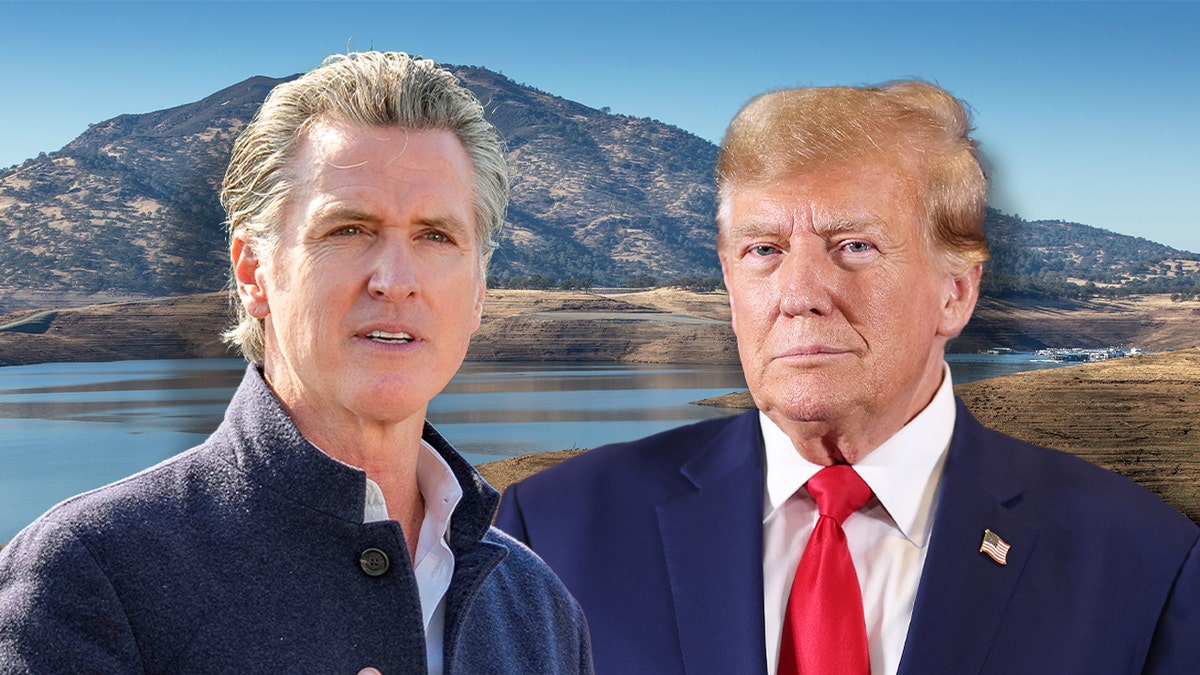
California Governor Gavin Newsom declared a state of emergency on Saturday, a move designed to accelerate the implementation of wildfire prevention projects throughout the state. This declaration comes in the wake of criticism from President Donald Trump regarding Newsom’s handling of past wildfire disasters, setting the stage for a potentially tense relationship as California grapples with an increasingly severe wildfire season.
The state of emergency allows Newsom to temporarily suspend certain environmental regulations that would typically slow down forest management projects and other crucial wildfire prevention measures. The governor’s office emphasized the urgency of the situation, noting that California has already experienced some of its most destructive wildfires in history, despite being only in March.
Newsom’s statement highlighted the ongoing efforts to streamline processes and invest in wildfire prevention. "Building on unprecedented work cutting red tape and making historic investments – we’re taking action with a state of emergency to fast-track critical wildfire projects even more," he said. He further emphasized the importance of these projects in protecting vulnerable communities, stating, "These are the forest management projects we need to protect our communities most vulnerable to wildfire, and we’re going to get them done."
The announcement directly addresses President Trump’s previous criticisms. Trump had accused Newsom of "gross incompetence" in handling recent wildfires, even calling for the governor’s resignation in a social media post on January 8, referring to him with a derogatory nickname. Newsom has dismissed Trump’s claims as "pure fiction."
Despite the apparent friction, Newsom has also sought federal support for disaster relief efforts. In early February, he traveled to Washington, D.C., to advocate for federal backing, describing his meeting at the White House as "very productive." Before meeting with Trump, Newsom held discussions on Capitol Hill, petitioning for "unconditional disaster aid."
The overall wildfire prevention efforts in California are estimated to cost approximately $2.5 billion. These funds will be allocated to a range of initiatives, including controlled burns, the reduction of fuel in burn areas, and the implementation of a public tracking system to monitor the progress of wildfire prevention efforts. The state government hopes that increased transparency will improve accountability and public confidence in the effectiveness of these projects.
The declaration of a state of emergency allows the state government to expedite the process of awarding contracts for wildfire prevention projects, bypassing some of the usual bureaucratic hurdles. This can involve streamlining environmental reviews, accelerating permitting processes, and reducing the time it takes to secure necessary resources.
Critics of the emergency declaration might raise concerns about the potential for environmental damage caused by the suspension of regulations. Environmental groups often argue that such regulations are in place to protect sensitive ecosystems, endangered species, and water resources. The rapid implementation of projects without careful environmental assessment could lead to unintended negative consequences, such as soil erosion, habitat loss, and water pollution.
However, proponents of the emergency declaration argue that the immediate threat posed by wildfires outweighs the potential risks associated with temporarily suspending certain regulations. They emphasize the devastating impact that wildfires can have on communities, including loss of life, property damage, economic disruption, and air quality degradation. By accelerating wildfire prevention efforts, they believe the state can reduce the likelihood of catastrophic fires and protect the health and safety of its citizens.
The types of forest management projects that will be fast-tracked under the state of emergency include:
- Fuel Reduction: This involves removing brush, dead trees, and other flammable materials from forests and wildlands. This can be achieved through mechanical thinning, prescribed burns, and other techniques.
- Defensible Space Creation: This involves creating a buffer zone around homes and other structures by removing vegetation and other flammable materials.
- Forest Health Improvement: This involves improving the overall health and resilience of forests by promoting biodiversity, managing insect infestations, and controlling invasive species.
- Infrastructure Improvements: This involves upgrading roads, trails, and other infrastructure to improve access for firefighters and facilitate evacuation efforts.
The success of these wildfire prevention efforts will depend on a number of factors, including the availability of funding, the cooperation of landowners, and the effectiveness of the implementation strategies. The state government will need to work closely with federal agencies, local communities, and private landowners to ensure that these projects are carried out effectively and efficiently.
The conflict between Newsom and Trump adds another layer of complexity to the situation. While Newsom has sought federal support for disaster relief, Trump’s criticisms and derogatory remarks have the potential to undermine cooperation and hinder the state’s efforts to secure federal funding. It remains to be seen whether the two leaders can overcome their personal animosity and work together to address the wildfire crisis in California.
Newsom’s commitment to working "across the aisle" suggests a desire to bridge the partisan divide and build consensus around wildfire prevention efforts. However, given the highly polarized political climate, it may be challenging to achieve bipartisan support for these initiatives.
The ongoing wildfire crisis in California highlights the urgent need for comprehensive and proactive forest management strategies. As climate change continues to exacerbate the risk of wildfires, the state will need to invest in long-term solutions that address the underlying causes of the problem. This includes reducing greenhouse gas emissions, promoting sustainable forestry practices, and building more resilient communities.
